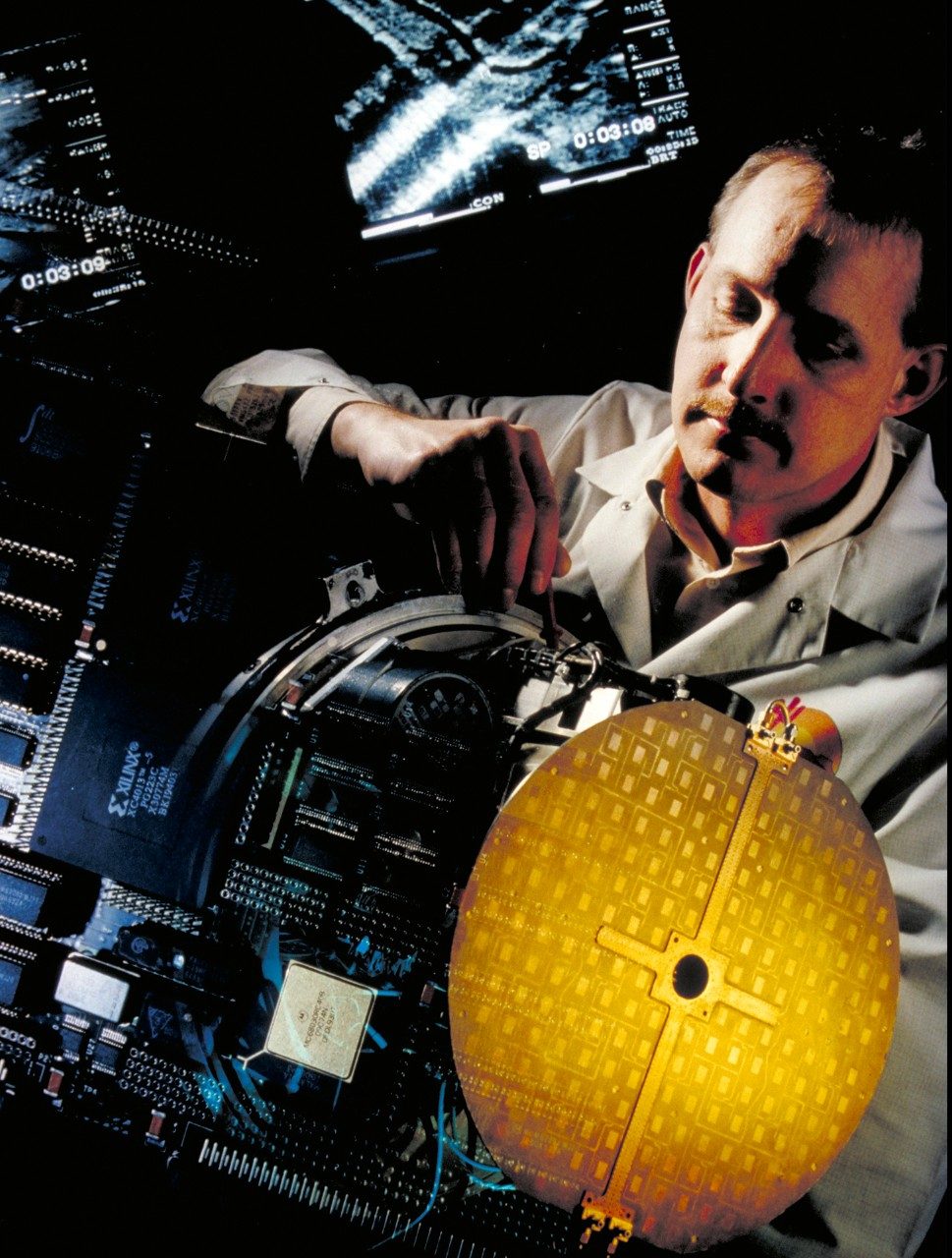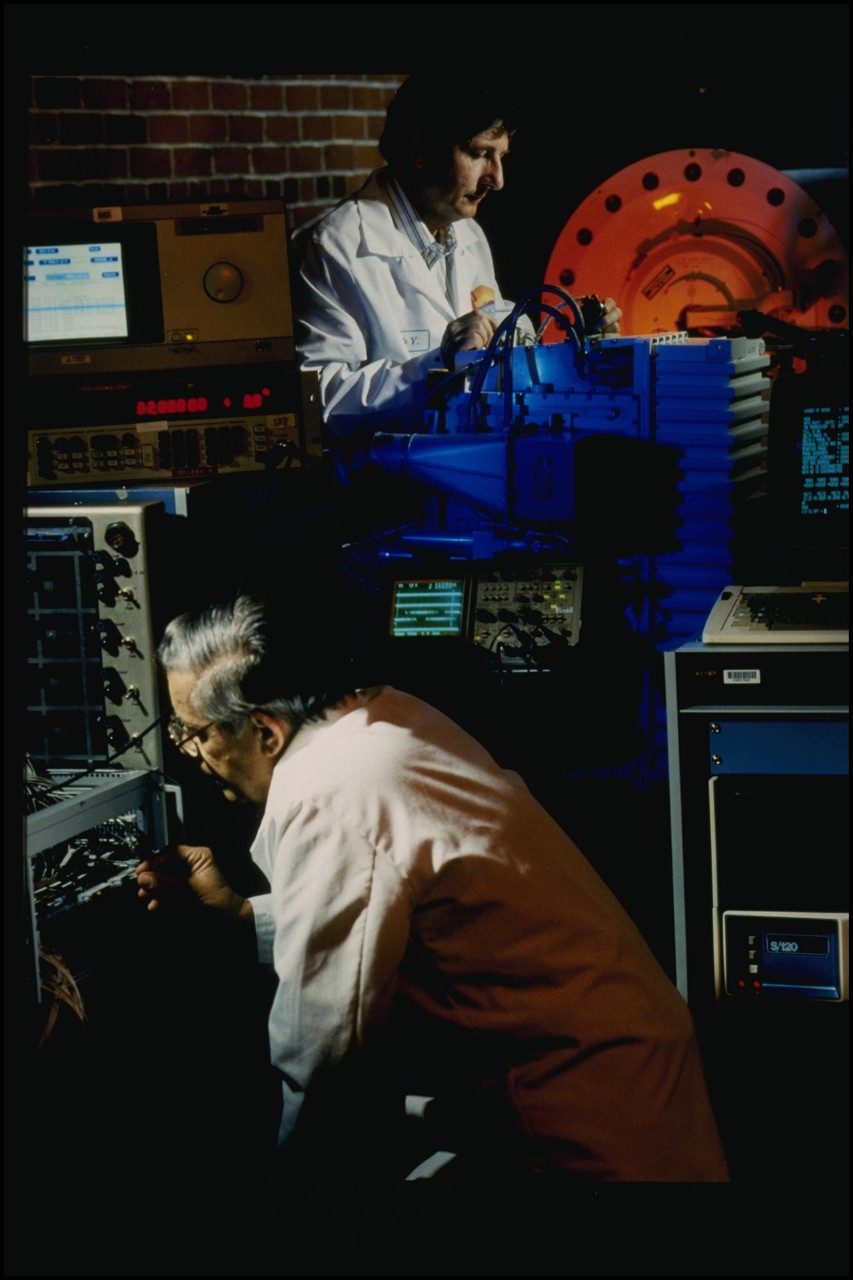In the aftermath of World War II, the United States found itself faced with a new challenge: how to keep an eye on its wartime ally-turned-rival, the Soviet Union (not to mention other potential adversaries) in the rapidly unfolding Cold War?
Radar had proved an invaluable defensive tool in World War II, identifying ships and planes in darkness and through cloud cover and fog. For that reason, it held great promise as a key to ’round the clock, all-weather aerial reconnaissance, supplementing traditional photography.
There was just one problem: For 1940s and ‘50s radar technology to provide the kind of resolution needed for 24/7 reconnaissance, a high-flying plane would have had to carry an antenna almost as big as a football field!
Carl Wiley, a brilliant if eccentric engineer, seemed an unlikely candidate to solve this puzzle and usher in the modern era of global reconnaissance. In the 1940s, he had been the first American scientist to propose a design for “space sails” to harness solar energy and propel space flight; he wisely published under a pseudonym. But by 1950, Wiley had landed at Lockheed Martin legacy company Goodyear Aircraft Company and tackled airborne radar as his latest challenge.

SAR Is Born
Wiley’s breakthrough came in 1951 with the realization that radar reflections from discrete objects in a passing radar beam field each had a minute Doppler, or speed, shift relative to the antenna. By precisely analyzing the frequency of the return signal, Wiley found he could create detailed radar image using an antenna that 1/100th the size of the football field-long antenna traditional radar would require.
Wiley’s patent for what he called Simultaneous Buildup Doppler, which he applied for in 1954, is widely considered the first Synthetic Aperture Radar (SAR) patent. Shortly after Wiley made his discovery, teams at the University of Illinois and the University of Michigan had developed essentially the same concept of processing signals to create a “synthetic aperture,” which sharpened and focused the returning radar signal.
Lockheed Martin continued to lead SAR development for decades to come. A system called Douser deployed on a C-47 was the first to use SAR to create an image. The image could only capture objects or landscape features that were at least 500 feet across, but it was a start. By the late 1950s, engineers had sharpened the resolution to portray objects that were only 100 feet across, and then 50 feet.

The Blackbird’s Eyes
The U.S. government gave the company a high hurdle to clear in 1960 before it would embrace SAR technology for widespread use. The images generated by SAR had to be displayed “live” in an aircraft so pilots could establish their locations in real time.
The next version of SAR, with a resolution of 50 feet, flew shortly thereafter on a KC-135 specially modified for the occasion, and its live image passed the government’s test with flying colors—black and white to be specific.
That test “created an amazing amount of excitement for the future technology of all airplanes,” said Lockheed Martin Fellow Stephen Lasswell, who spent his career working on SAR. It also “specifically checked the final square necessary to begin the development of the supersonic spy plane, the SR-71,” he noted.
The company won the highly classified competition to build the imaging radar for the SR-71, which gave the Blackbird “eyes” that could identify objects about 30 feet in diameter up to 100 miles away from a height of more than 80,000 feet, all while traveling at as much as three times the speed of sound. The classified SAR systems on the Blackbirds would be refined and improved throughout the 29-year life of this extraordinary aircraft.
SAR technology advanced in classified and non-classified formats. By the latter part of the 1960s, Goodyear SAR systems were operating with a resolution of just one foot. Another innovation developed in the 1960s was foliage-penetrating SAR, dubbed FOPEN. Rudimentary at first, it initially had trouble distinguishing enemy structures from tree trunks—it was continually refined over subsequent decades, and plays a role in some of today’s most advanced airborne weaponry.
Geo Mapping
SAR technology was put to use in the non-military arena beginning in the 1970s. Lockheed Martin engineers developed mapping systems that were used to map areas all over the world. They were especially useful in equatorial and other regions that were often shrouded in clouds.
In 1974, the National Oceanic and Atmospheric Administration and the Jet Propulsion Laboratories teamed up to develop SAR technology for use on a satellite to make oceanic observations. The resulting launch of the Seasat satellite in 1978 marked a major step forward in remote sensing from space. Optical cameras aboard earlier Landsat satellites couldn’t see through cloud cover and had resolutions in the tens of meters, compared to less than a meter for Seasat.
SAR systems were subsequently deployed on numerous satellites as well as the space shuttle for remote sensing and environmental observations. And SAR technology was used for mapping of other planets as well.

TRACER for Unmanned and Manned Aircraft
SAR and FOPEN technology continued to be refined into the 1990s. Resolution that had been measured in feet was now measured in inches in certain applications. SAR technology is tailor-made for the 24/7 missions in often hostile territory assigned to unmanned drone aircraft.
In 2004, Lockheed Martin won the competition to develop Tactical Reconnaissance and Counter Concealment Enabled Radar (TRACER) for use on manned and unmanned platforms. While smaller and more lightweight than FOPEN, TRACER’s system design still incorporates all the capability of its predecessor, which uses an advanced detection capability to suppress background clutter.
Enhanced FOPEN technology enables the system, which was tested successfully on drone aircraft in 2011, to detect vehicles, buildings and large metallic weapons or other systems in dense foliage.
“TRACER has demonstrated its long-endurance, wide-area surveillance capability to detect targets in all operational environments, in any type of weather, day and night,” said Jim Quinn, vice president of C41SR Systems with Lockheed Martin’s IS&GS-Defense. The TRACER system was recently deployed on a manned platform to support U.S. Southern Command (SOUTHCOM) missions in counter-terrorism, humanitarian assistance and disaster relief operations.
Sources and Additional Reading
- Lasswell, Stephen. “History of SAR at Lockheed Martin (formerly Goodyear Aerospace),” Society of Photo-Optical Instrumentation Engineers, Proceedings Paper, 16 May 2005.
- Colburn, Robert, “Synthetic Aperture Radar,” ieee-usa today’s engineer online, March 2009.




